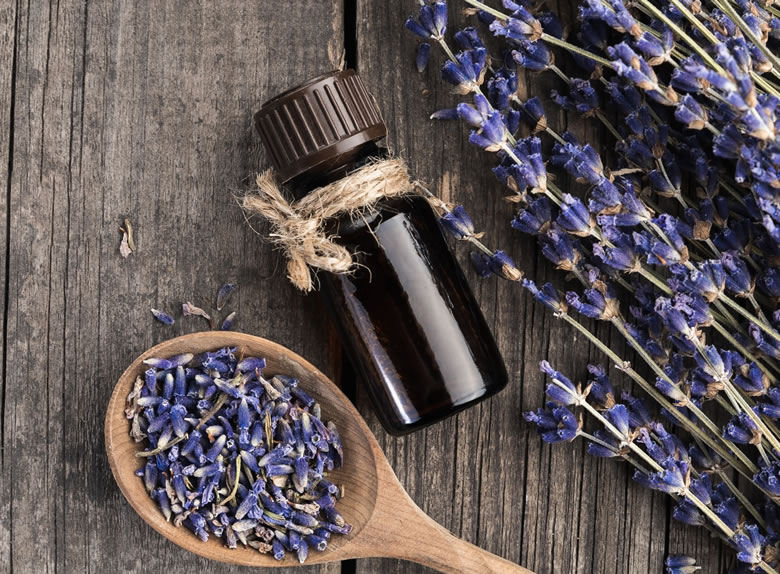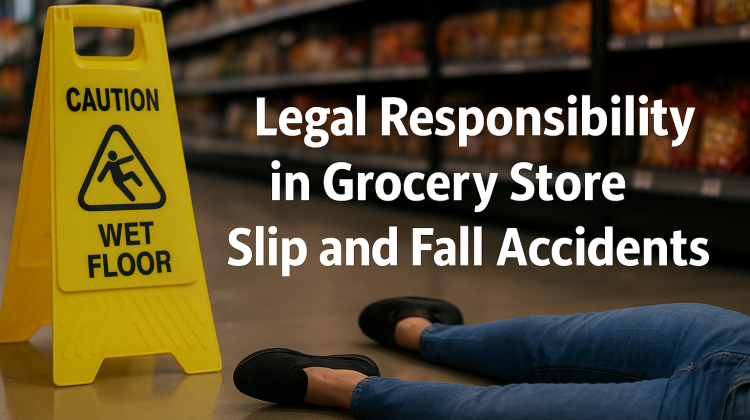What are Essential Oils?
Essential oils are plant-based, volatile oils (i.e., they easily evaporate when exposed to the air at normal temperatures) that have an aroma characteristic of the plant from which they are derived. They are obtained through steam and/or water distillation or mechanical methods, such as cold pressing. Once they have been extracted, they are combined with a carrier oil, such as coconut, olive, avocado oil, etc., to create a product that is ready to use.
The oils capture the plant’s “essence” (scent and flavor), and when inhaled, are said to stimulate the brain’s limbic system – the part of the brain that plays a role in emotions – and produce a calming effect, relieve stress, headache, etc., depending upon the oil used (each oil is said to have unique health benefits).
Are Essential Oils Safe? Essential Oil Dangers
What many people forget is that these oils truly are chemicals in a bottle. Since each oil has its own composition of chemicals, the unique variation in each will impact the smell, absorption, and effect it can have on the body. First, these oils should not be ingested, and diffusers should be far enough away so that droplets do not fall on the skin, and all oils should be kept out of reach of children.
A recent study published by the Endocrine Society highlighted some of the problems endocrine-disrupting chemicals in essential oils are causing. For example, it has been found that certain oils are causing abnormal breast growth in prepubescent children. Premature thelarche, or breast development in girls younger than eight years of age, and Gynecomastia, abnormal breast development in males, have been linked to exposure to lavender and tea tree oils. Research has shown that these oils may act as endocrine-disrupting chemicals, mimicking or opposing the actions of hormones produced in the human body.
Over a seven-year period, 24 patients (11 boys and 5 girls) who were seen for prepubertal gynecomastia or thelarche in Miami, Florida had been exposed to lavender containing products (shampoos, colognes, soaps). Four other girls who had been seen for the same condition at U.C. Irvine and CHOC’s Children’s Hospital in California had also been exposed to lavender fragrance products.
One toddler who had been bathed with a lavender oil soap since infancy showed breast development by one year of age, while another showed these signs after being exposed to a lavender oil diffuser that ran near her all day on her teacher’s table. Breast tissue regressed in one boy and three girls within six months of no longer being exposed to the lavender fragrance containing products.
Death by Oil?
Of greatest concern is the belief that essentials oils are devoid of potential harm simply because they are “natural” and therefore “must” be good for you. This belief has led to too many people falling ill or even dying as a result of using these products without having all the facts first. Education is key here – learning all sides of essential oil use, that is, and not just “buying” what those marketing these products are selling without first gathering all the vital information – so that consumers can make informed choices. Toxicity is a very real threat.
One review of adverse effects from essential oils looked at 71 adverse event cases; one of those was death from Wintergreen oil, while other reports have informed of deaths associated with pennyroyal extracts. Safety in essential oil use depends on several factors (including pregnancy) that should be taken into consideration before their use.
Other examples of toxic effects from essential oils:
- Camphor (Cinnamomum camphora): can cause seizures if swallowed, has caused seizures in children when applied topically
- Eucalyptus (Eucalyptus): can cause seizures if swallowed
- Nutmeg (Myristica fragrans): can cause hallucinations if swallowed
- Pennyroyal (Mentha pulegium): a liver toxin
- Sage (Salvia): swallowing more than a small amount can cause seizures
- Turpentine (extracted from the resin of various trees): can cause irritation in eyes, skin, nose, throat; headache, dizziness, convulsions; skin sensitization; hematuria (blood in the urine), proteinuria; kidney damage; abdominal pain, nausea, vomiting, diarrhea; chemical pneumonitis (aspiration liquid)
- Wintergreen (Gaultheria procumbent): can be lethal if consumed in amounts larger than is allowed as a food additive
Essential Oil Cautions
Remember that just because a product’s packaging says it is “natural” does not mean it is “risk-free,” nor does it mean a substance is non-toxic or non-poisonous. One woman suffered second and third-degree chemical burns after applying essential oil on her skin before going in a tanning bed. As she stated later, there actually was a tiny warning label about the danger of exposure to UV rays, she just didn’t see it until it was too late. Knowing how some of these oils can interact with your environment is essential (no pun intended) when it comes to using them safely. Always read the labels on these products.
Some terms you should know:
Phototoxic Oils – Phototoxicity is a chemically induced skin irritation that resembles an exaggerated sunburn. It occurs when certain chemicals in the oils bind to DNA in the skin that reacts with UV light. Many citrus oils contain furocoumarins, a class of organic compounds produced by the plant. The furocoumarins in oils can cause chemical burns when users are exposed to the sun’s UV rays. The UV rays kill cells and damage tissues. Exposure to sunlight is to be avoided when using the oils listed below:
- Angelica root
- Bergamot
- Cassia
- Cumin
- Dill
- Ginger
- Grapefruit (cold-pressed)
- Lemon
- Lime (cold expressed oil)
- Lovage
- Mandarin (possibly)
- Orange and Tangerine
- Verbena
- Yuzu
Potentially Toxic or Problematic Essential Oils – The oils listed below can be toxic if used improperly or in high, inadequately diluted forms and should be used with caution. Too many people assume that essential oils are safe because they are derived from plant sources, but that is simply not the case. Many of these oils can cause rashes when used on the skin, or poisonous if ingested or absorbed through the skin. Aspirating (breathing in) some of these oils can cause pneumonia, so putting them in children’s vaporizers, especially where the droplets can fall on a child’s skin or when the child can breathe them in directly, should be avoided.
Highly toxic essential oils include camphor, clove, lavender, eucalyptus, thyme, tea tree, and wintergreen oils. Many essential oils can cause chemical burns, breathing problems, liver failure, and brain swelling, or symptoms such as agitation, hallucinations, and seizures.
To keep kids and pets safe, essential oils should always be stored properly and locked and out of reach. Always follow instructions regarding their use and seek help when needed by calling Poison Control (1-800-222-1222) in an emergency.
The short list below written by clinical toxicologist Rose Ann Soloway describes what is known about a few potential essential oil side effects:
- Peppermint is used for gastrointestinal discomfort but it may have some uncomfortable side effects, including heartburn, nausea, and indigestion. Not only can it come with a list of other side effects, but it’s important to choose the correct species of mint, as some types are poisonous; for example, pennyroyal oil is very poisonous to the liver.
- Wintergreen is used in some over-the-counter skin preparations to relieve pain. It creates a feeling of warmth because it causes blood vessels to enlarge. Oil of wintergreen is very dangerous if more than a tiny amount is swallowed, however. While it is used as a food flavoring in trace amounts, drinking from the bottle can be deadly.
- Tea tree oil is used for some kinds of fungal skin infections. Between 2011 and 2015, reports of toxic exposures to tea tree oil doubled, most being children
- Nutmeg is used in food but too much nutmeg can actually cause hallucinations and coma.
- Eucalyptus is used for its soothing effects when inhaled (often used for colds or cough). If swallowed, however, eucalyptus oil can be dangerous, particularly to small children.
- Sage oil has been used as a scent, seasoning, and remedy. Swallowing more than a very small amount can result in restlessness, vomiting, vertigo, rapid heart rate, tremors, seizures, and kidney damage.
- Camphor is used as a moth repellent and as an ingredient in skin preparations. Even a small amount of camphor is dangerous if swallowed. Seizures can begin within only a few minutes. Camphor poisoning also occurred when skin preparations containing camphor were applied repeatedly on children.
Below is an extended list of potentially toxic oils you should be aware of, particularly if you have children in your home who may come into contact with them:
- Anise (star)
- Aniseed
- Bay laurel
- Bay (West Indian)
- Calamintha
- Camphor (White)
- Cassia
- Cedarwood (Virginian)
- Cinnamon (leaf)
- Clove (bud)
- Coriander
- Eucalyptus
- Fennel (sweet)
- Hops
- Hyssop
- Juniper
- Nutmeg
- Parsley
- Pepper (black)
- Sage (Spanish)
- Tagetes
- Tarragon
- Thyme (white)
- Turmeric
- Valerian
Can Essential Oils Cause Interactions with Prescription Drugs?
The fact that essential oils are naturally occurring substances doesn’t mean it is always safe to take them with prescription drugs. Essential oils can potentially cause drug interactions, so proceed with caution. For example, grapefruit juice – another natural substance – can cause serious interactions with several common prescription drugs due to its effect on the liver. For this reason, some prescription drugs are often labeled with warnings to avoid it while on that particular medication.
The interactions between grapefruit juice and certain drugs are caused by furanocoumarins – a type of chemical compound found in certain citrus fruits. Specifically, 6,7-dihydroxybergamottin (DHB) and bergamottin are thought to cause interactions between grapefruit and certain drugs is also present in several essential oils. Relatively small amounts of bergamottin can be found in grapefruit oil, lemon oil, and other essential oils derived from citrus fruits.
The specific classes of drugs affected by bergamottin and 6,7-dihydroxybergamottin include the following:
- Statins
- Antihistamines
- Cough suppressants
- Benzodiazepines and hypnotics
- Erectile dysfunction drugs
- HIV protease inhibitors
- Immunosuppressants
- Hormones, including hormonal birth control pills
While the number of furanocoumarins in most citrus-based essential oils is extremely small, it is important to be aware of the risk of these chemicals if you take specific prescription drugs on an ongoing basis and to understand that essential oils can compound the effects of some drugs.
Because essential oils have specific health properties – for example, lavender oil and neroli oil both have mild sedative properties – it’s important not to combine them with drugs that produce similar reactions. In other words, used in combination with medication designed for the same purpose, the effect can be strong and, in some cases, potentially dangerous.
Consult Your Doctor Before Using Essential Oils
If you take any prescription medicine on an ongoing basis, you should talk to your doctor before using essential oils as the potential for drug interaction exists. Be sure to mention the specific essential oils you plan to use and the amount and frequency at which you plan to use them. This will help your doctor give specific, actionable advice about which oils are safe to use and which should be avoided.
Finally, it’s important to seek advice from your doctor about drug interactions even if you take a prescription drug on an irregular or infrequent schedule. Some drugs might remain in your bloodstream for days or weeks after their active effects end and using essential oils in combination could result in negative side effects.
Essential Oils: Safety Tips
Don’t Overdo It
- Oils are potent, and most are too strong to use directly on the skin unless carefully diluted in a carrier oil
- Even a small amount of diluted oil goes a long way. As with over the counter and prescription medications, use the lowest possible dose to achieve the desired effect.
Don’t Use Oils Instead of Medicine When it is Needed
- Oils are not a substitute for necessary prescription or over-the-counter medications.
- Because these products are not FDA-approved, there are very few studies regarding their safety or efficacy, especially for specific conditions, so use caution.
Don’t Ignore Reactions
- Adverse reactions to oils can be mild—such as red, irritated skin—or severe, such as chemical burns and respiratory distress.
- Remember that ingesting oils (taking oils by mouth), even just a few drops in a water bottle, can increase the odds of a negative reaction, says registered dietitian Stephanie Cramer.
- If you apply or ingest an oil and develop any kind of reaction—even a mild one—stop using the oil immediately and consult a health professional.
Don’t Use Photosensitive Oils in the Sun
- Citrus oils, such as lime, lemon, grapefruit, and bergamot can produce a rash or even serious burns if you use them before going out into the sun.
Safely Using and Storing Essential Oils is Extremely Important.
- If an essential oil is found in a cosmetic product, use it according to label directions. Stop using it immediately if a rash or other skin reaction occurs and gently wash it off.
- If it’s found in a scent, be sure that it is used and stored where children can’t find it.
- If it’s in medicine, use according to label instructions ONLY.
- If, for some reason, you have bottles of essential oils at home, consider discarding them (safely) if you have young children. Otherwise, they MUST be locked up, out of sight and reach of children and pets – all the time.
If someone swallows an essential oil, or a product containing essential oils, use the webPOISONCONTROL® online tool for guidance or call Poison Control at 1-800-222-1222 right away.
Resources
American College of Healthcare Sciences (2017). Three common and dangerous essential oil mistakes. http://info.achs.edu/blog/aromatherapy-essential-oil-dangers-and-safety
Carr, T. (2019). Are essential oils safe for kids? https://parenting.nytimes.com/childrens-health/essential-oils-safe
Department of Health WA (2019). Essential oils – Health warning. https://healthywa.wa.gov.au/Articles/A_E/Essential-oils
Dotinga, R. (2016). More kids accidentally poisoned by essential oils. https://www.webmd.com/children/news/20160513/more-children-accidently-poisoned-by-essential-oils
Essence of Arcadia (2017). Is it safe to take essential oils with prescription drugs? (2017). https://www.essenceofarcadia.com/blogs/articles/is-it-safe-to-take-essential-oils-with-prescription-drugs
Essential Oils (2019). https://rationalwiki.org/wiki/Essential_oil#cite_note-5
Healthline (2019). Are essential oils safe? 13 things to know before use. https://www.healthline.com/health/are-essential-oils-safe
Marshall, L. (2018). Essential oils promise help, but beware the risks (WebMD). https://www.webmd.com/beauty/news/20180813/essential-oils-promise-help-but-beware-the-risks
National Institute of Environmental Health Sciences (2019). https://www.niehs.nih.gov/health/topics/agents/essential-oils/index.cfm
Pennyroyal (2019). Memorial Sloan Kettering Cancer Center. https://www.mskcc.org/cancer-care/integrative-medicine/herbs/pennyroyal
Plant Therapy (2018). How to dilute essential oils: A comprehensive guide. https://blog.planttherapy.com/blog/2018/09/11/how-to-dilute-essential-oils-a-comprehensive-guide/#targetText=A%20good%20rule%20of%20thumb,for%20you%20essential%20oil%20drops.
Poison Control (2018). Essential oils: Poisonous when misused. https://www.poison.org/articles/2014-jun/essential-oils
Posadzki, P., Ernst, E., & Alotaibi, A. (2012). Adverse effects of aromatherapy: A systematic review of case reports and case series. The International Journal of Risk & Safety in Medicine, 24(3), 147-61. https://www.researchgate.net/publication/230768825_Adverse_effects_of_aromatherapy_A_systematic_review_of_case_reports_and_case_series
Soriano, M. (2017). Woman suffers third-degree burns after using essential oils. https://www.rebelcircus.com/blog/woman-suffers-third-degree-burns-after-using-essential-oils/2/
Tisserand Institute (2014). Safety and dilution are inextricably linked. https://tisserandinstitute.org/essential-oil-dilution-chart/
Weaver, J. (2019). Lavender oil linked to early breast growth in girls. https://factor.niehs.nih.gov/2019/9/feature/3-feature-lavender/index.htm





No Comment